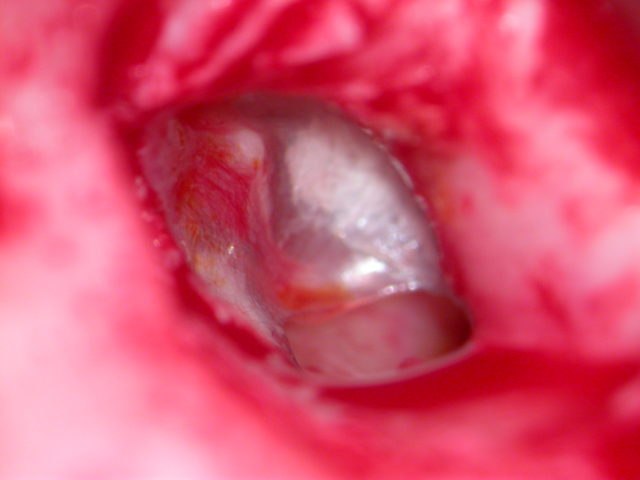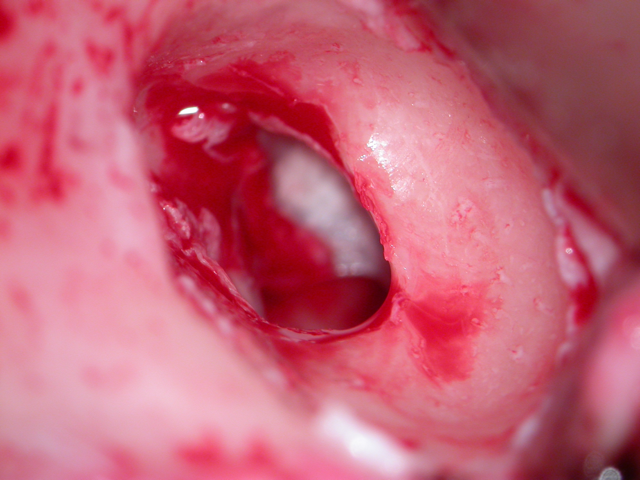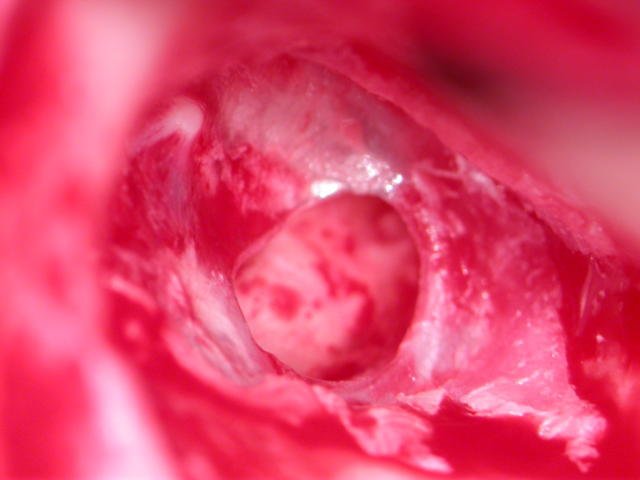Repair of the perforated ear drum

John Hamilton's approach to tympanoplasty
- What causes ear drum perforations?
- What problems do ear perforations cause?
- Can I avoid surgery if I have a perforated ear?
- How is the hole in the ear drum repaired?
- How is the hole in the ear drum repaired?
- How does Mr Hamilton improve the success rate of his ear perforation closure?
- What is Mr Hamilton's success rate for repair of holes in the ear drum?
What causes ear drum perforations?
Most ear drum perforations are caused middle ear infections. A small proportion are caused by trauma. Most ear perforations heal spontaneously provided that the ear is kept dry, but a small proportion do not heal and may require surgical help.
What problems do ear perforations cause?
A hole in the ear drum provides a pathway for bacteria to pass from the outside world into the middle ear space. This lining of this space responds to infection by producing large amounts of mucus. Ears with perforations discharge if they are not kept scrupulously dry. The hole in the ear drum also reduces hearing in the affected ear.
Can I avoid surgery if I have a perforated ear?
Symptoms can be kept to a minimum if the ear is kept dry. Some patients prefer to adhere to the discipline of keeping the ear dry, rather than undergo surgery.
How is the hole in the ear drum repaired?
A piece of tough but thin tissue is secured between the ear drum and its bony moorings to seal the perforation. The tissue is either taken from the lining of a muscle next to the ear or from ear cartilage. The ear drum is half the size of a five pence piece or a dime, and so the operation is performed using a microscope.
How successful in the country in general is this operation?
Two national audits have looked at this question. On both occasions they found that the national average rate for closing the hole in the ear drum was only 2 out of 3 cases.
The reason for the this low rate of success is the shape of the ear canal: the eardrum is at the deep end of the ear canal which is six times as long as it is wide. The ear canal is also curved towards the front of the head. This means that it is difficult to see the entire ear drum down the ear canal. In fact, in the national audit, holes in the most difficult area to inspect were successfully repaired in approximately 1 out of 2 of cases.
How does Mr Hamilton improve the success rate of his ear perforation closure?
The way to convert ear drum repair from a lottery to a reliable procedure is to widen the ear canal so that the tympanic membrane can be seen clearly. This is a skilled procedure, but it greatly facilitates tympanic membrane repair. The canal widening cannot be detected by social inspection of the ear.

The results of ear perforation repair are affected by the poor view and access the ear canal provides to the ear drum. In this image taken using a microscope, the perforation appears to be visible. In fact, only part of it is visible.

This difficulty viewing the perforation can be overcome by widening the bony part of the ear canal. In this image, the procedure is half completed so you can see the size of the original canal and the new one together.

With the ear canal widened the ear perforation can now be seen in its entirety. It is now much easier to repair the perforation successfully.
What is Mr Hamilton's success rate for repair of holes in the ear drum?
Mr Hamilton has undertaken over 500 ear drum repairs using this technique. His surgery has been audited twice and his tympanic membrane closure rate was 97% on both occasions.